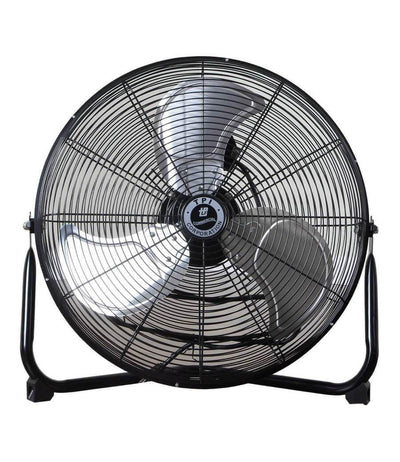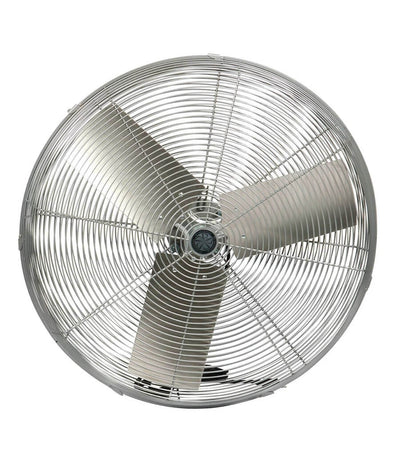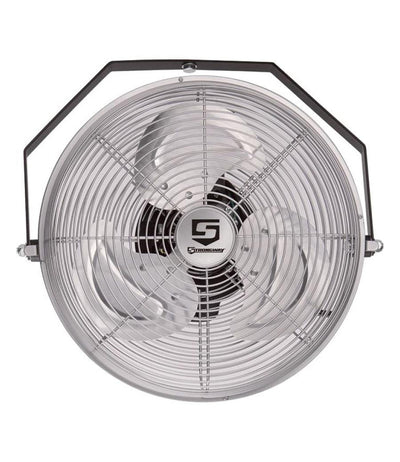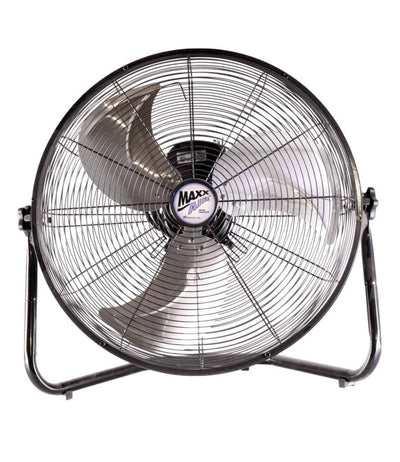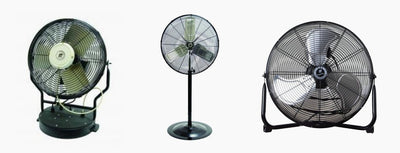Nowadays, we’re all hearing about how pollution is adversely affecting the Earth, along with its inhabitants. The gravity of this human-made problem is so severe that air pollutants have accumulated in our atmosphere and trapped the heat coming from the sun. Because of this, we are currently experiencing a dangerous phenomenon called global warming. Such a phenomenon is extremely detrimental to our environment and health, and it’s all because of air pollution.
That said, air pollution isn’t something to be trifled with. Outdoor air pollution has already caught our attention, but indoor air pollution continues to be overlooked by most. Although indoor air pollution does not bring global consequences as drastic as those that outdoor air pollution brings, it undeniably debilitates our well-being in subtle ways. The air present indoors is more concentrated than the air outdoors, which means that indoor air contaminants are relatively more dangerous to our health. In fact, it is estimated that 1.5 million people die each year because of health-damaging indoor air pollutants, whereas the number of casualties directly caused by outdoor air pollution is approximately 500,000. Indoor air pollution can be easily mitigated, and one way to do so is to improve indoor air quality.
What is Indoor Air Quality?
Indoor air quality is characterized by the condition of the air that we breathe while we are inside or around buildings or structures. In other words, it refers to the content of indoor air that can influence the comfort and health conditions of a building’s occupants. The quality of indoor air can typically be compromised by microbial contaminants, gases, chemicals, and other particles and pollutants.
Indoor air pollutants can cause short-term health issues, such as nausea, fatigue, headaches, and irritation of the nose, throat, and eyes, which are mostly treatable. Generally speaking, these effects are dependent on factors, like the age, preexisting health issues, and level of sensitivity of the occupants.
Apart from this, indoor air pollutants can also cause long-term health problems, such as some forms of cancer, respiratory diseases, and heart disease, which can be fatal, if not severely debilitating.
It’s important to note that reactions to indoor air pollutants vary from one person to another. Nevertheless, long-term exposure to concentrated air pollution can inevitably cause health problems one way or another.
One of the ways to determine the quality of indoor air is to collect air samples. Stoves, perfumes, office equipment, cleaning sprays, cigarette smoke, and others expel thousands of volatile organic compounds (VOCs). That’s why some people use a VOC sensor, which measures the presence of VOCs. Other than collecting air samples, monitoring the occupants’ reaction to pollutants is another way to check the quality of indoor air.

The Most Common Sources of Indoor Air Pollutants
The first step in solving most problems is to determine their sources. The problem of indoor air pollutants is no different. Before addressing this issue, you should know the most common sources of indoor air pollutants as well as their effects on occupants. Knowing these sources can help you figure out the most effective measure to take in improving the quality of your indoor air. On the other hand, knowing the effects of these sources can shed light on the seriousness of indoor air pollutants.
1. Volatile Organic Compounds
Volatile organic compounds (VOCs) take the form of gas. These compounds are produced in the air by solid and liquid products and various processes. Although VOCs are present outdoors, they are more concentrated indoors. In fact, the concentrations of VOCs indoors can reach ten times higher than the concentrations of VOCs outdoors.
A wide assortment of household products emit VOCs, and some of these products include disinfectants, pesticides, cleaning supplies, furnishings, deodorants, cosmetics, and gasoline.
Building materials also emit huge amounts of VOCs. These materials include adhesives, paint, varnishes, sealants, pressed wood products, carpets, and finishes.
In offices, some of the sources of VOCs are printers, copiers, carbonless paper, glue, and markers.
2. Secondhand Smoke
Smoking cigarettes is, in itself, a serious health hazard. To make matters worse, smoking indoors can cause more debilitating effects. Since air pollutants tend to be more concentrated indoors, tobacco smoke can also bring more harmful consequences to the health of occupants, including nonsmokers. Once any person is exposed to secondhand smoke, there isn’t any risk-free level at all.
Secondhand smoke consists of various toxic and even carcinogenic chemicals, which permeate our lungs’ alveoles and bronchioles. That’s why nonsmokers who are exposed to secondhand smoke are 20 to 30% more likely to develop lung cancer. Another consequence of secondhand smoke is that children and infants can experience different health problems, such as respiratory tract infections, worsening of asthma attacks, and even sudden infant death syndrome.
3. Carbon Monoxide
Despite the fact that carbon monoxide is an odorless and colorless gas, it is nonetheless highly toxic. If you look at it another way, exposure to this toxic substance can be a lot more dangerous as it cannot be seen, smelled, or tasted. Because of this, carbon monoxide can result in damaging or even fatal effects before occupants are even aware of its presence.
Low concentrations of carbon monoxide can cause fatigue, headache, and nausea. Prolonged exposure to low levels of carbon monoxide can result in permanent physical or mental issues. As its concentrations go higher, occupants will likely experience dizziness, confusion, impaired vision, lack of coordination, disorientation, vomiting, or death.
Some of the sources of carbon monoxide are gas appliances, stoves, fireplaces, car exhaust, kerosene and gas space heaters, oil furnaces, boilers, and gas-powered equipment. You can protect yourself and your family from the dangers of carbon monoxide by placing one of the best carbon monoxide detectors in your home.
4. Biological Contaminants
Biological contaminants are pollutants produced by living things. Some of the most common sources of these pollutants are moist or wet surfaces. These surfaces can become breeding grounds for mold, mildew, dust mites, bacteria, and insects. Other sources of biological contaminants are plant pollens, pet dander, airborne allergens from dried rat urine, viruses from people and animals, and many more.
Most of the time, biological contaminants can trigger allergic reactions. In some cases, they can also cause fatigue, digestive issues, dizziness, and fever.
5. Radon
Like carbon monoxide, radon is an odorless, colorless, and tasteless gas. Unlike carbon monoxide, however, radon mostly comes from outside. That’s why it is nearly impossible to avoid. Exposure to this gas is the second leading cause of lung cancer in the U.S.
Radon comes from uranium found in soil or rocks. When uranium breaks down, it forms radium, which, in turn, becomes radon. Radon can enter buildings through drainage systems, cracks in the wall, and other openings. Once decaying radon is inhaled, lung cancer is the possible consequence. It is estimated that over 20,000 deaths are caused by radon-related lung cancer every year.
6. Asbestos

Asbestos is a fibrous mineral that naturally occurs in rock and soil. This durable and heat-resistant mineral is commonly found in building materials, such as ceiling tiles, floor tiles, roof shingles, cement, pipe wraps, insulation materials, and heating systems. It is also used in manufacturing products, such as gaskets, heat-resistant fabrics, automobile parts, and packaging.
Asbestos fibers break off of these materials when these materials are damaged or disturbed, or when they are cut, sanded, or drilled. Once asbestos fibers break off, they remain airborne for long periods. Inhaling these fibers can increase the likelihood of mesothelioma, which is a specific form of lung cancer. Miners, insulation workers, and maintenance personnel, in particular, are at risk of asbestos exposure.
Tips for Improving Indoor Air Quality
Given all these sources of indoor air pollutants, there’s no question that they are often prevalent inside homes, offices, facilities, and all other buildings. Since most people spend the greater part of their days indoors, almost everyone is exposed to the hazards of these pollutants. The best solution to this problem is to attack the source or, to put it differently, reduce or eliminate air pollution.
Improving indoor air quality can be hugely beneficial for members of the household, especially children and those with preexisting medical conditions. In addition to this, businesses that adopt measures of reducing indoor air pollution can make their environment healthier for their employees and clients alike.
Here are ten tips to improve indoor air quality and breathe more healthily:
1. Clean Regularly
Cleaning does not only make an indoor space more pleasant to look at, but it also prevents chemicals and allergens from building up. Vacuuming twice or more every week can prevent dust from accumulating. After vacuuming, it’s best to follow it with mopping. Mopping can pick up the particles that the vacuum cleaner failed to suck up.
Besides these cleaning tools, the right cleaning agents should be used to make any indoor space spick and span. Water and soap are the go-to cleaners of most people, but at times, these cleaning agents are not enough to remove the dirt from certain surfaces. For instance, there are cleaners specially formulated to wipe marks off whiteboards. Plastic, a ubiquitous material making up most objects, can be cleaned and polished by plastic cleaners.
Lastly, cleaning also means taking out the trash regularly. Letting trash stay indoors will, of course, stink up the place and give way to dust, dirt, and bacterial buildup. With this in mind, office employees should replace their shredder bags once they’re filled up since dust particles abound in shredded pieces.
Printers, copiers, shredders, and other pieces of equipment contribute to dust buildup in offices. One way to prevent dust from accumulating is to install filters and vacuums on office equipment. Shredder filters, for instance, can collect up to 98% of fine dust particles
2. Prohibit Smoking Indoors
Quitting smoking altogether can significantly benefit both smokers and nonsmokers. However, if this addiction cannot be helped, it’s best to prohibit smokers from smoking indoors and ask them to smoke outside instead. As was previously mentioned, there’s no risk-free level for anyone exposed to secondhand smoke. That’s why everyone should ban smoking indoors completely.
Every year, the loss of productivity from secondhand smoke has cost the U.S. billions of dollars. On a more positive note, there is an increase in the number of those who have successfully quit smoking in workplaces with strict regulations against smoking. At the same time, there is a considerable reduction in the number of cigarettes smoked each day in these workplaces.

3. Maintain a Healthy Humidity Level
Biological contaminants, such as mold and dust mites, grow in humid environments. A healthy humidity level ranges from 30% to 50%. To achieve this optimal level of humidity, using a dehumidifier can greatly help. Installing a dehumidistat or moisture control system on existing ductwork or heaters can also help maintain a healthy humidity level. Another way to maintain a healthy humidity level is to install exhaust fans in the building. During hotter months, turning on the air conditioner can reduce humidity and even pollens. If there are leaky pipes or ducts, fixing them right away can prevent moisture buildup.
Like excessive levels of humidity, low humidity levels will also do more harm than good. Dry indoor air can cause body moisture to evaporate, which can lead to static electricity, dry skin, chapped lips, itchy nose and throat, and respiratory illnesses. One of the best solutions to this is to use a humidifier. In hot weather, cooling equipment such as evaporative coolers and mist fans can cool down indoor spaces while increasing their moisture levels.
4. Improve Air Circulation and Ventilation
Nothing beats the fresh air outside, but most of us are required to stay indoors all day long. Staying in confined spaces for extended periods isn’t good for our well-being, especially if those spaces have high concentrations of air pollutants. That’s why improving air circulation and ventilation can go a long way. Doing so can help us breathe more easily and divert pollutants toward the outside of the building.
Opening windows is one effective way to optimize ventilation. Another way to improve air circulation is to use fans. However, if there isn’t enough space for floor fans, there are fans that can be mounted on the ceiling or wall. Fans are especially beneficial in office workstations since many offices are poorly ventilated. Aside from this, factories, warehouses, and other industrial facilities filled with equipment and toxic chemicals can significantly benefit from proper airflow coming from industrial fans or even air curtains.
5. Use Odor-Free Paint
Remodeling buildings and maintaining equipment require the application of fresh coats of paint. The problem with this, however, is that paint fumes can also be considered harmful indoor air pollutants. As paint dries, it releases VOCs. Painting walls, machines, and other objects cannot be avoided, which is why professionals and homeowners should make use of low-odor, low-VOC paint. Paint comes in various finishes and formulas, but the kind of paint that produces the least odor and VOC is water-based paint. Because of this, it’s the most highly recommended paint to use indoors.
6. Test for Indoor Air Quality
Knowing what the problem is can help you think of the best solution. With this in mind, testing for indoor air quality can determine the presence of pollutants. Radon, mold, carbon monoxide, and VOCs are the four most common concerns in maintaining indoor air quality. You can easily find professionals who can check the building for these pollutants. Other than this, you can also purchase detectors, home test kits, or sensors that can detect the presence of these pollutants.
Choosing the Right Equipment for Better Indoor Air Quality
Air quality is one of the most overlooked aspects of maintaining safety indoors. Because of this, a lot of people suffer from minor health issues to severely debilitating and fatal conditions. Mitigating indoor air pollution is the first step to improve indoor air quality.
Proper air circulation and healthy humidity levels are key factors in good indoor air quality. These factors can be achieved through the use of the right supplies and equipment. Fortunately, Engineer Warehouse has just the right products that can help enhance the quality of indoor air. You can find a wide range of fans and HVAC systems that can generate optimal airflow for better ventilation. With these pieces of equipment, you can definitely have the best indoor air quality and a healthier lifestyle as well.














